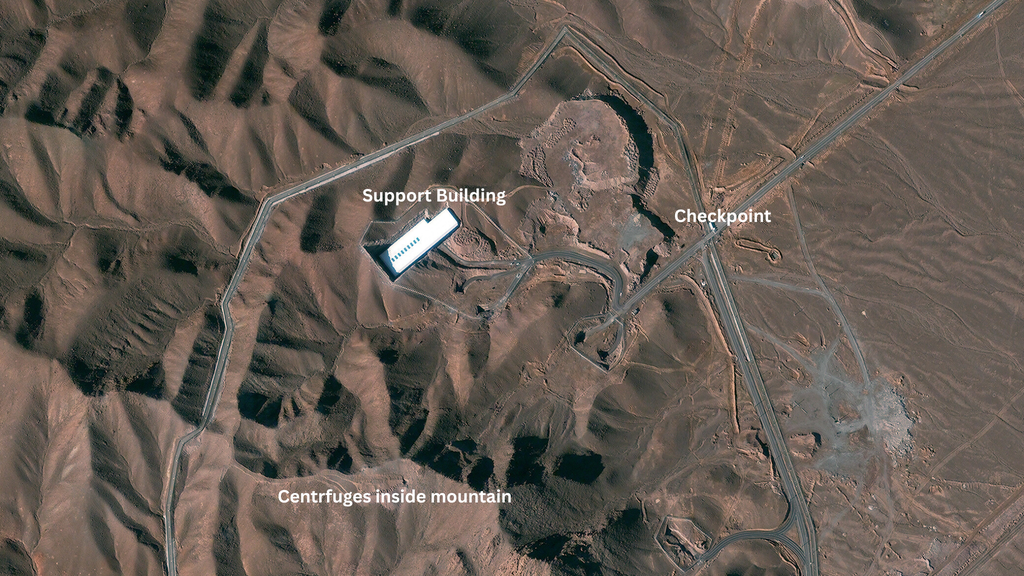
U.S. bombs Iran's nuclear sites; oil surges, markets rattle, war fears grow. Global diplomacy, NPT collapse, and economic shockwaves unfold.
📍 EstimatedStocks Geopolitical & Economic Research Desk 🌐 https://estimatedstocks.com/articles/desert-firestorm-israel-vs-iran-and-the-middle-east-on-edge
🧨 Executive Summary
In an unprecedented escalation, U.S. President Donald Trump ordered precision airstrikes on Iran’s fortified nuclear facilities—Fordow, Natanz, and Isfahan—on June 22, 2025. The move, executed in coordination with Israel, marks the most significant military action in the Middle East since the U.S. invasion of Iraq. Trump declared the strikes a "spectacular military success,” while Iran denounced them as a “gross violation of international law,” promising “everlasting consequences.”
This conflict—ignited in the shadows, now erupting in daylight—threatens to reshape global alliances, upend energy markets, collapse nuclear non-proliferation frameworks, and destabilize the world economy. As missiles fly and diplomacy falters, the world now teeters on the edge of a broader war and a dangerous new nuclear age.
1️⃣ The Strike: Targets, Tactics, and Fallout
🎯 Sites Hit:
- Fordow (Qom): A deep-buried enrichment site. U.S. deployed the 30,000-pound GBU-57 Massive Ordnance Penetrator via B-2 stealth bombers.
- Natanz: Iran's largest enrichment complex. Hit by Tomahawk missiles and aerial bombardment.
- Isfahan: Hosts Iran’s uranium conversion facilities and nuclear R&D labs.
🚀 U.S. Arsenal:
- Six bunker-busters dropped on Fordow.
- 30 Tomahawk missiles fired from submarines at Natanz and Isfahan.
- Confirmed use of B-2 bombers—the world’s most advanced strategic stealth aircraft.
🧬 Radiation Status:
No radiation leaks have been reported. Iran preemptively evacuated enriched uranium and staff—confirmed by Iranian media and the IAEA.
2️⃣ Iran’s Response: Fire and Fury
-
Missile Retaliation: Over 27 ballistic and hypersonic missiles fired toward Tel Aviv, Haifa, and southern Israel. Eleven Israeli civilians wounded; multiple buildings damaged.
-
Statement from Iran’s Foreign Minister Abbas Araghchi: "This is an act of war. We will respond in kind and with force far greater than any inflicted upon us."
-
Supreme Leader Khamenei: Silent thus far—interpreted as deliberative calculation before escalation.
-
Targeting Options:
- U.S. bases in Qatar, Iraq, UAE, and Bahrain (home to 40,000 U.S. troops).
- Cyberattacks on U.S. infrastructure and Western oil firms.
- Proxies: Hezbollah, Houthis, and Shia militias in Iraq and Syria.
3️⃣ Global Diplomatic Breakdown
🛑 UN & IAEA
- UN Secretary-General António Guterres: Called the attack a "dangerous escalation and a direct threat to international peace and security."
- IAEA: Convened an emergency session; confirmed no radiation spike but denied foreknowledge.
🌍 Reactions by Country/Bloc:
-
U.S. Allies:
- U.K. PM Keir Starmer: Supports tactical aims, urges restraint.
- EU: Divided—France and Germany call for de-escalation; Poland and Baltics support U.S.
-
Adversaries/Non-Aligned:
- China and Russia: Condemnation. Called for urgent return to diplomacy.
- Latin America (Cuba, Venezuela, Chile): Denounced strikes as "imperialist aggression."
- Iraq: Condemned U.S. action; fears regional destabilization.
-
Israel: PM Netanyahu celebrated the strike. “History will record this as the day the Iranian nuclear threat was neutralized.”
4️⃣ U.S. Domestic Backlash
🏛️ Political Divide
-
Democrats: Denounced the strikes as unconstitutional.
- Rep. Alexandria Ocasio-Cortez: “Grounds for impeachment.”
- Sen. Chris Murphy: “No imminent threat.”
-
Republicans: Mostly supportive.
- Speaker Mike Johnson: “This is America First in action.”
- Sen. Rand Paul, Rep. Thomas Massie dissent on legal grounds.
-
MAGA Base Reaction: Mixed. Influencers like Steve Bannon called for deeper justification.
5️⃣ Economic Shockwaves
🛢️ Energy Markets
- Oil Surge: Brent crude climbed to nearly $79/barrel following the U.S. strikes, with WTI at $73.84/. A closure of the Strait of Hormuz could push prices beyond $100/.
- Gold: Surged past $3,368/oz.
- Defense Stocks: Lockheed, Raytheon, Northrop Grumman rally on war expectations.
📉 Global Markets
| Region | Impact |
|---|---|
| U.S. | Inflation risk rises; Fed may pause rate cuts. |
| EU | Energy shock to households and industries. Political divisions deepen. |
| China | Oil-dependent economy faces risk to supply chains. Strategically benefits from distracted U.S. |
| India | Currency weakens (₹86/USD); imported inflation surges. Trade exposed to shipping disruptions. |
| Emerging Markets | Capital flight, bond yield volatility, and dollar strength create headwinds. |
6️⃣ Strategic Risk Landscape
| Risk Factor | Implication |
|---|---|
| Oil shock | Global inflation spike, reduced consumption |
| Strait of Hormuz blockade | 33% of global oil trade threatened |
| Iran exits NPT | Nuclear proliferation in MENA (Saudi, Turkey, Egypt) |
| Proxy warfare | Hezbollah-Houthi activation in Israel, Gulf, Red Sea |
| Multi-theater war | Draws in U.S., Israel, Gulf states, Lebanon, Syria |
7️⃣ The Bigger Picture: End of Non-Proliferation?
The airstrikes, launched by two nuclear powers (U.S. and Israel) against a non-nuclear signatory of the NPT, have raised concerns about the death of global arms control. Saudi Arabia and Turkey are rumored to be accelerating secret nuclear programs. Iran, once cautious, now sees nuclear deterrence as an existential shield rather than an ideological ambition.
8️⃣ Scenarios Ahead: Four Strategic Futures
- Negotiated De-escalation: Fragile window. Requires Iran to return to JCPOA terms in exchange for sanctions relief.
- Tit-for-Tat Escalation: Missile exchanges, cyberattacks, and regional skirmishes continue.
- Full-Scale War: If Iran kills U.S. personnel or blocks Hormuz, war could engulf Syria, Iraq, Lebanon, and the Gulf.
- Nuclear Arms Race: Iran exits NPT, sets off a domino effect across the Middle East.
📌 Conclusion: The World at a Nuclear Crossroads
The June 22, 2025 strikes on Iran’s nuclear facilities are a turning point in 21st-century geopolitics. They have upended strategic deterrence norms, intensified diplomatic fragmentation, and triggered a global economic shock. Iran has survived the attack physically—but psychologically and politically, it has crossed the Rubicon.
Whether peace or protracted war follows now depends on the choices made in Tehran, Washington, and Tel Aviv. But one thing is certain: the global order, already frayed by conflict, populism, and great-power rivalry, is now firmly in an era of accelerated volatility—and no one is insulated.
🛡️ Legal & Ethical Disclaimer
This article is intended for informational and analytical purposes. EstimatedStocks AB maintains neutrality in all geopolitical assessments and adheres to standards of independent financial journalism.
Disclaimer:
The information provided in this article is for educational purposes only and should not be construed as investment advice. estima...
Author
Shaik K is an expert in financial markets, a seasoned trader, and investor with over two decades of experience. As the CEO of a leading fintech company, he has a proven track record in financial products research and developing technology-driven solutions. His extensive knowledge of market dynamics and innovative strategies positions him at the forefront of the fintech industry, driving growth and innovation in financial services.


